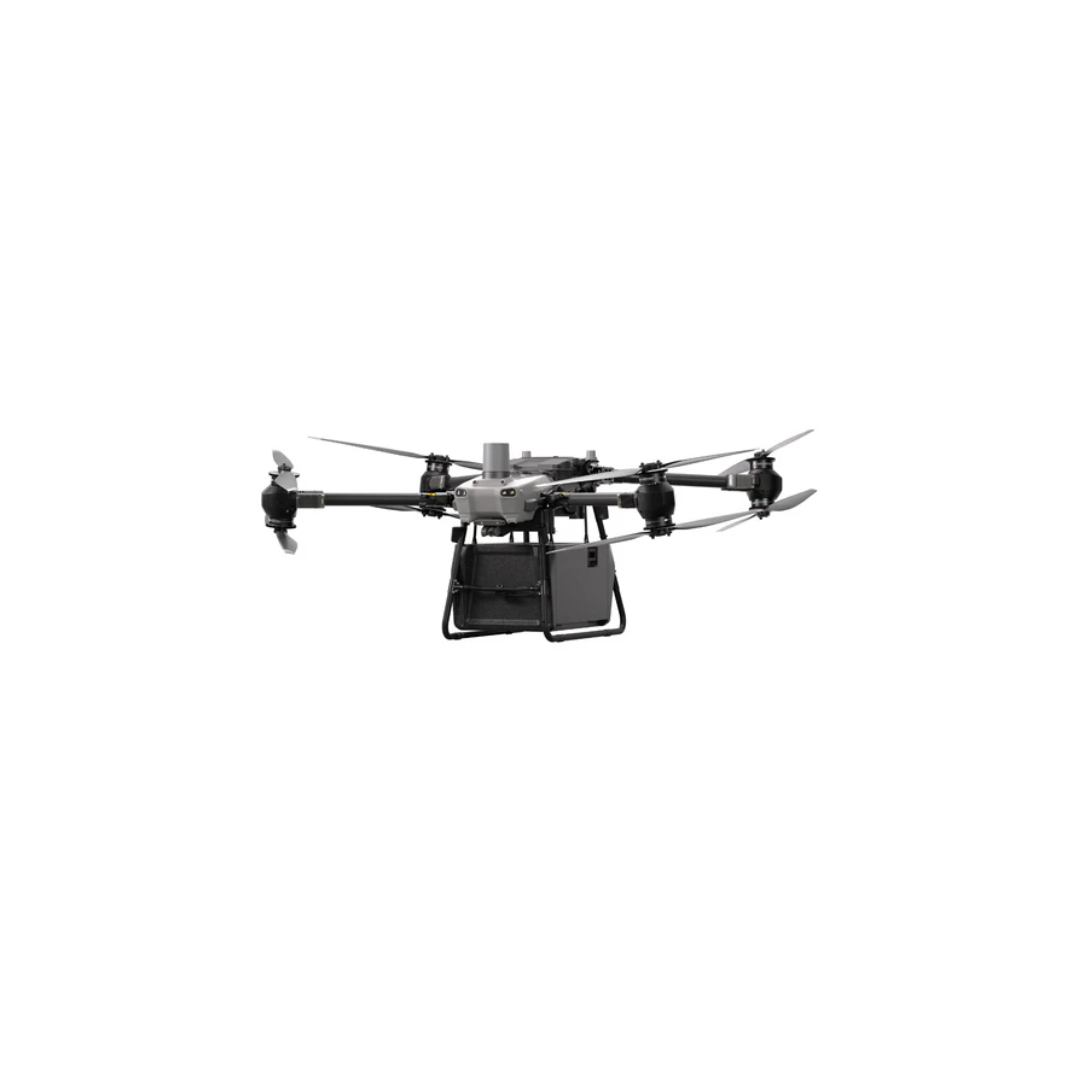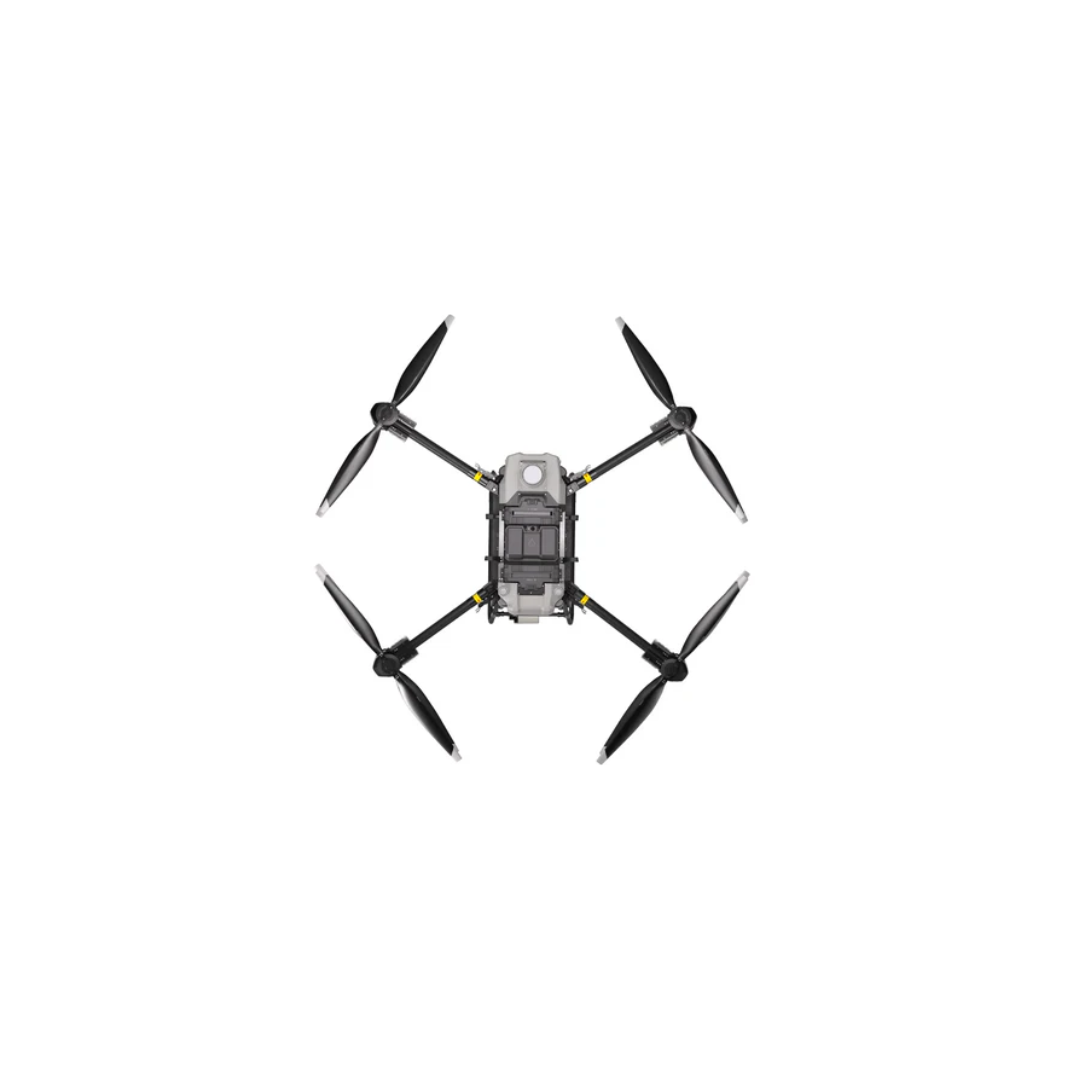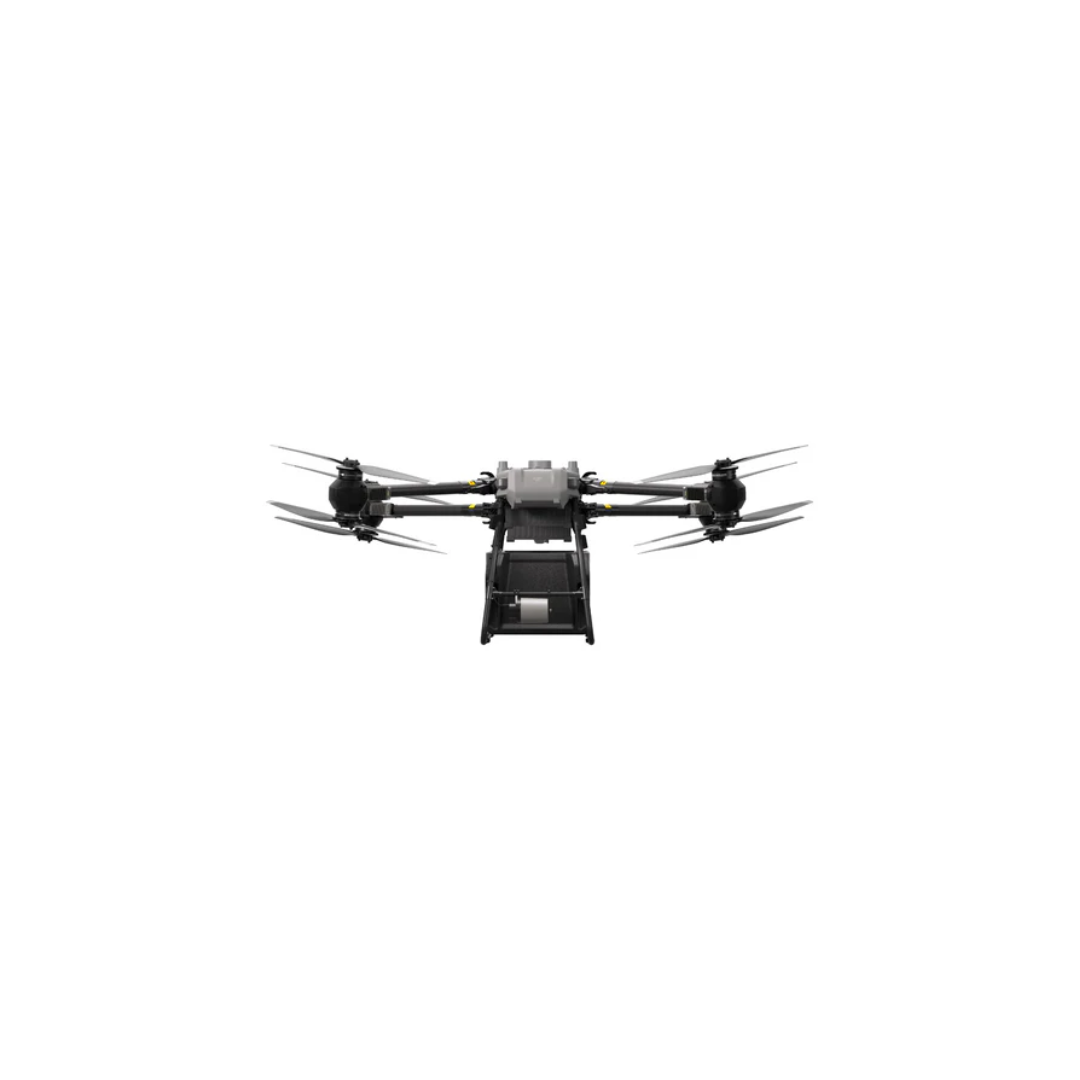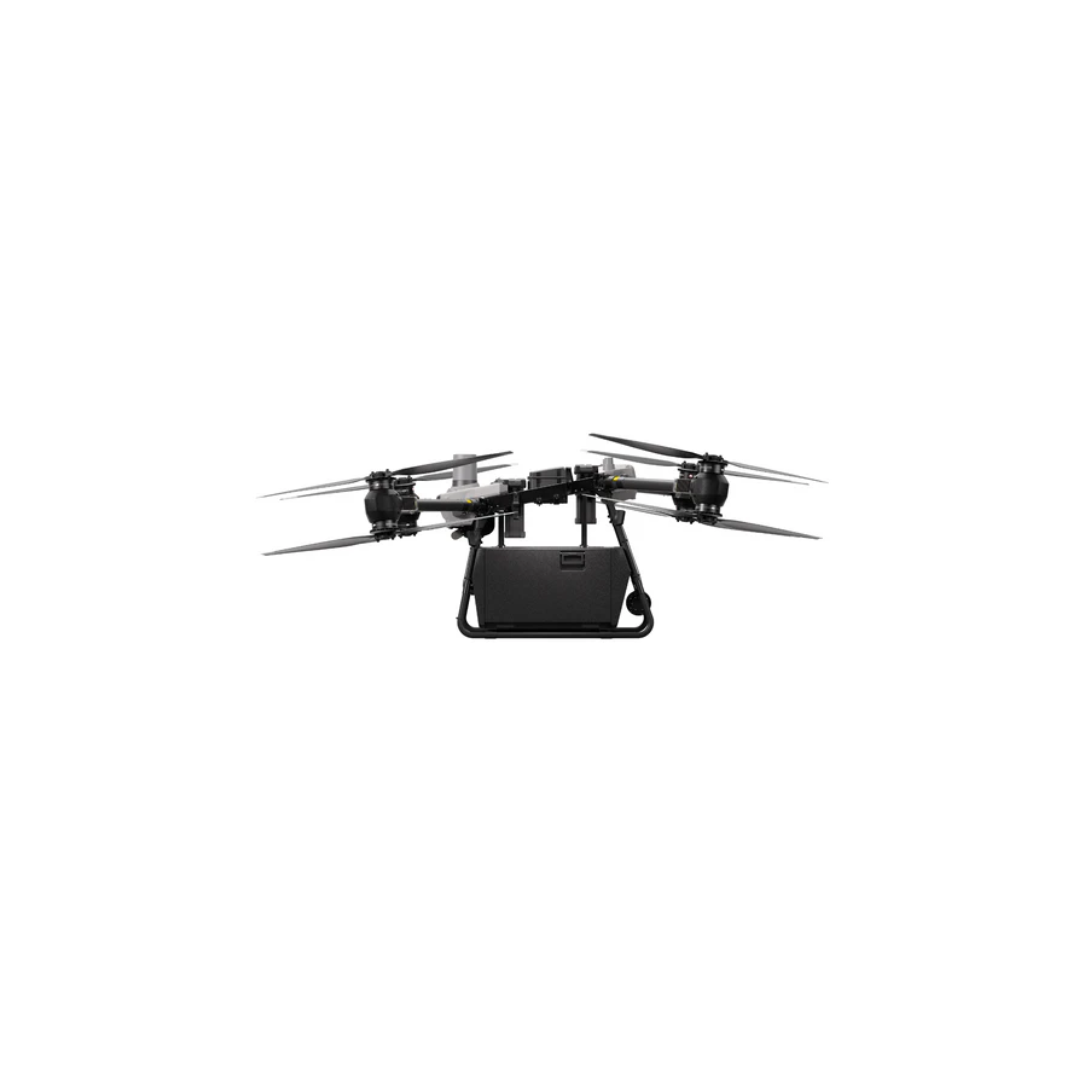DJI FlyCart 30
DJI FlyCart 30 (FC30) is DJI’s first ever delivery drone
Drone delivery has captured the public's imagination since 2013 when Jeff Bezos predicted drones would be delivering packages within five years. Industrious developers have created their own delivery solutions built on DJI's SDK, such as the M300 Cargo. But now, a decade later, DJI is bringing this prediction closer to reality with the release of DJI FlyCart 30. While it's certainly capable of delivering packages to homes, DJI FlyCart 30 was built for more challenging and demanding scenarios, like emergency supply, mountain logistics, maritime-offshore transportation, or anything that requires transportation of heavy cargo across challenging terrain.

DJI FlyCart 30 can carry 30 kg
That’s over 80 cans of soda (12 fl oz, 355 ml cans). Typically our users have been using FC30 to transport tools, equipment, emergency supplies, or anything that is essential for life or work in remote regions.
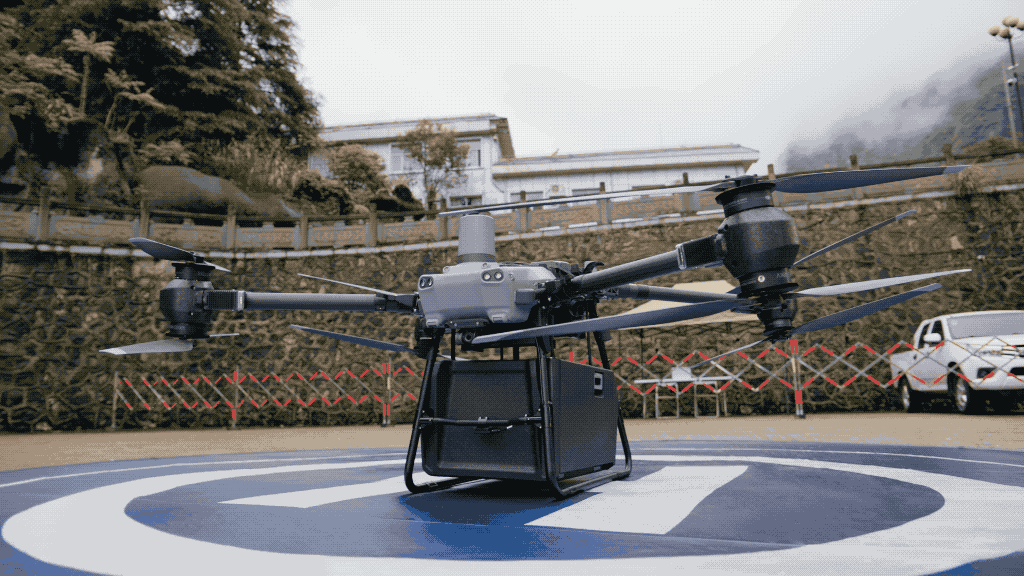
DJI FlyCart 30 supports both a single battery and dual battery configurations
We recommend flying with both batteries because if something goes wrong and a single battery fails, the other can sustain flight for a safe landing. However, with a single battery, the drone itself is lighter and can carry a heavier payload. You can think of it as a tradeoff between carrying capacity vs. flight time and distance.

DJI FlyCart 30 batteries each weigh approximately 11.3 kg
Each DB2000 battery has a 38000 mAH capacity and are rated for operations in temperatures ranging from -20° to 45° C. They’re hot-swappable and support self-heating so they’re ready to perform even in cold environments. The DB2000 batteries are charged by the DJI C8000 intelligent charger, which can charge two batteries at once. A single battery takes 26.5 minutes to charge, while both batteries together can charge in 36.6 minutes. DB2000 batteries are warrantied for 1,500 charging cycles, or 12 months of work, whichever comes first.
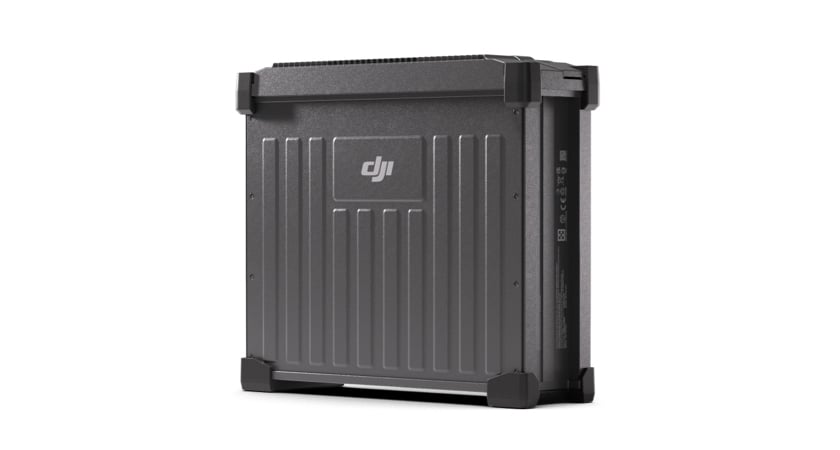
DJI FlyCart 30 can carry 40 kg
This is achieved in the single battery configuration. However, it can only fly for maximum of 9 minutes and maximum distance of 8 km in the single battery configuration. We only recommend this for emergency situations where you need to transport a lot of material, quickly.

DJI FlyCart 30 can transport goods 16 km away
This is achieved with two fully charged batteries and a full 30kg payload. With a lighter payload, it can fly even further. Without a payload, the drone can fly 28 km. *

* Measured with DJI FlyCart 30 (operating on dual batteries) flying at a constant 15 m/s in a windless environment at sea level without payloads until displayed battery level reached 0%. Data is for reference only. Please pay attention to the Return to Home (RTH) prompts in the DJI Pilot 2 app during your flights.
DJI FlyCart 30 can continually fly on one set of batteries for 18 minutes
This is measured with a full 30kg payload. If you need to carry more weight in an emergency situation, you can opt to fly with one battery to raise carrying capacity to 40 kg for a 9 minute flight.
Here is a table that covers the hovering time, flight time, and flight distance of DJI FlyCart 30 across its single and dual battery configurations and payload weights.
|
Flight Mode |
Payload Weight |
Single Battery |
Dual Battery |
|
Hovering Endurance (empty weight, with max battery capacity) |
0 kg |
15 mins |
29 mins |
|
Hovering Endurance (max weight, with max battery capacity) |
30 or 40 kg |
8 mins (40 kg) |
18 mins (30 kg) |
|
Max Flight Distance (empty weight, with max battery capacity) |
0 kg |
12 km |
28 km |
|
Max Flight Distance (max weight, with max battery capacity) |
30 or 40 kg |
8 km (40 kg) |
16 km (30 kg) |
|
Max Flight Time (max weight, with max battery capacity) |
30 or 40 kg |
9 mins (40 kg) |
18 mins (30 kg) |
* Measured with DJI FlyCart 30 flying at a constant 15 m/s in a windless environment at sea level until displayed battery level reached 0%. Data is for reference only. Please pay attention to the Return to Home (RTH) prompts in the DJI Pilot 2 app during your flights.
DJI FlyCart 30 is a heavy drone
It weighs 42.5 kg without batteries, or 65 kg with two batteries. Altogether when carrying its max payload capacity of 30 kg, the maximum takeoff weight is 95 kg. Its dimensions are 2800x3085x947 mm (LxWxH) when fully unfolded, which is over 8 m3 or roughly the size of a small shed. Fortunately the arms and propellers can be folded in, leaving FlyCart 30 with a much smaller 1115x760x1027 mm (LxWxH) footprint, which is easier for storage or transportation.

DJI FlyCart 30 is fast
It has a maximum flight speed of 20 m/s or 72 km/h (44.7 mph) which is attainable in manual flight mode. During automatic flight along pre-planned flight routes, the maximum flight speed is 15 m/s. FlyCart 30 can also ascend and obliquely descend at 5 m/s, saving time and battery life. These speeds were measured in controlled conditions, at zero altitude and in a windless environment, and with a 30 kg payload.

DJI FlyCart 30 supports Cruise Control during manual flight
During long manual flights, DJI FlyCart 30 supports Cruise Control, so pilots don’t need to hold the control stick forward for minutes at a time.

DJI FlyCart 30 is precise
With dual RTK modules, DJI FlyCart 30 has centimeter-level precision. With RTK positioning enabled, it can hover in place with ±10 cm horizontal, ±10 cm vertical accuracy.
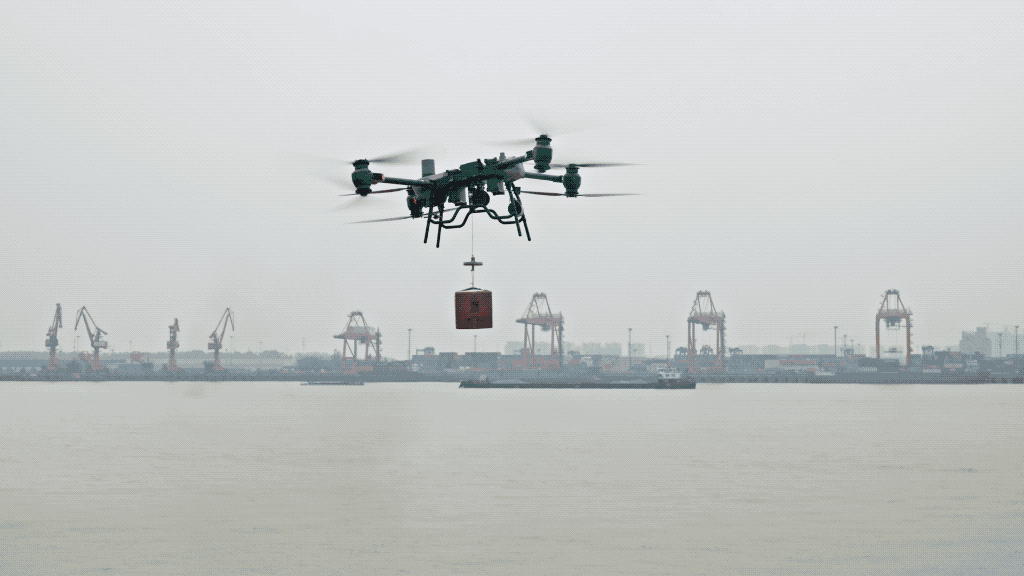
DJI FlyCart 30 has a maximum flight altitude of 6,000 m
The payload capacity of DJI FlyCart 30 decreases as the takeoff altitude increases. 6,000 m is the maximum safe altitude when flying in dual batteries mode without a payload. With a full 30kg payload, the maximum safe altitude is 3,000 meters.

DJI FlyCart 30 is built for challenging weather conditions
It is IP55 rated and corrosion resistant, can withstand temperatures from -20° to 45° C, and fly in wind speeds up to 12 m/s. That’s equivalent to 43 km/h or 26.8 mph. We’ve built it tough to ensure your delivery arrives safely, even in challenging environments.

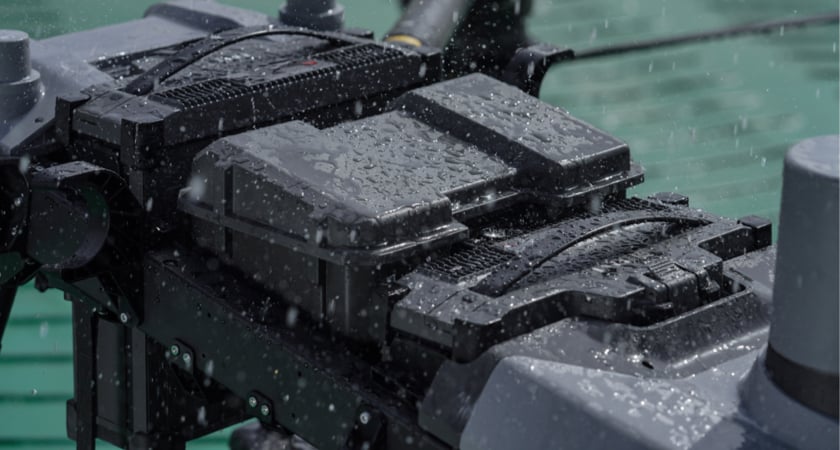
DJI FlyCart 30 is flexible with SDK
Through DJI’s Payload SDK, developers can create third-party payload systems on DJI FlyCart 30. You can contact dev@dji.com for technical assistance.
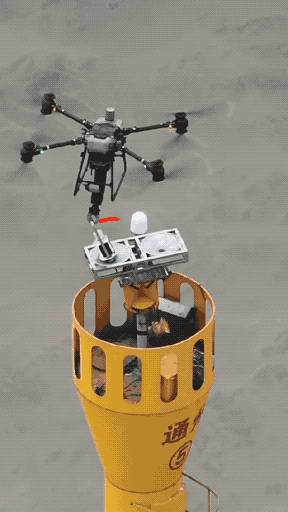
DJI FlyCart 30 supports Cargo Mode
This is the drone’s default configuration, where payloads are placed inside an cargo case.The cargo case is made of EPP and has a metal frame. When the drone lands, the case can be opened and the payload retrieved. With weight and center-of-gravity detection, you can ensure balanced cargo loading for safe and stable flight. The cargo case is 70 L in volume and has the following internal dimensions: 573x416x305 mm (LxWxH).

DJI FlyCart 30 supports Winch Mode
The Winch System Kit is sold separately, but is perfect for deliveries to areas without clear or stable landing sites. This alternative to Cargo Mode allows the drone to lower the payload and automatically release the package when it touches the ground, rather than landing. The winch cable is 20 meters long and can descend or retract at 0.8 m/s. The winch claw can hold a 40kg max payload, and can automatically or manually release the payload when it comes in contact with the landing site. While flying, if the hanging payload begins to sway, DJI FlyCart 30 can stabilize with Swing Control, an intelligent feature that automatically adjusts that drone’s attitude to minimize swinging. This feature saves battery as well as improves overall flight safety.
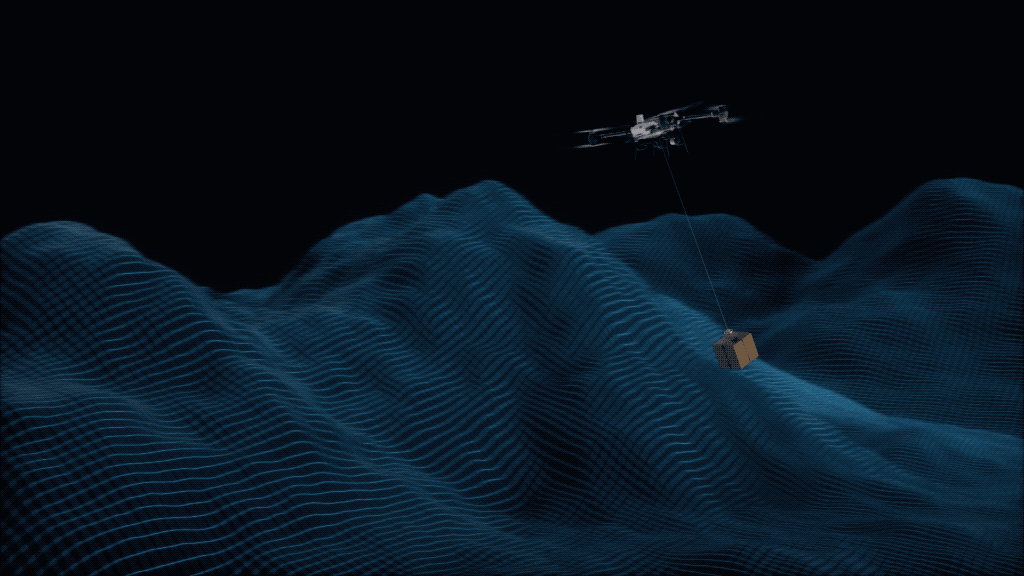
DJI FlyCart 30 enables precise winch deliveries with AR technology
When the drone is hovering above the landing point, pilots will see the projected delivery location on their remote controllers. This helps ensure the cargo is delivered precisely and safely.
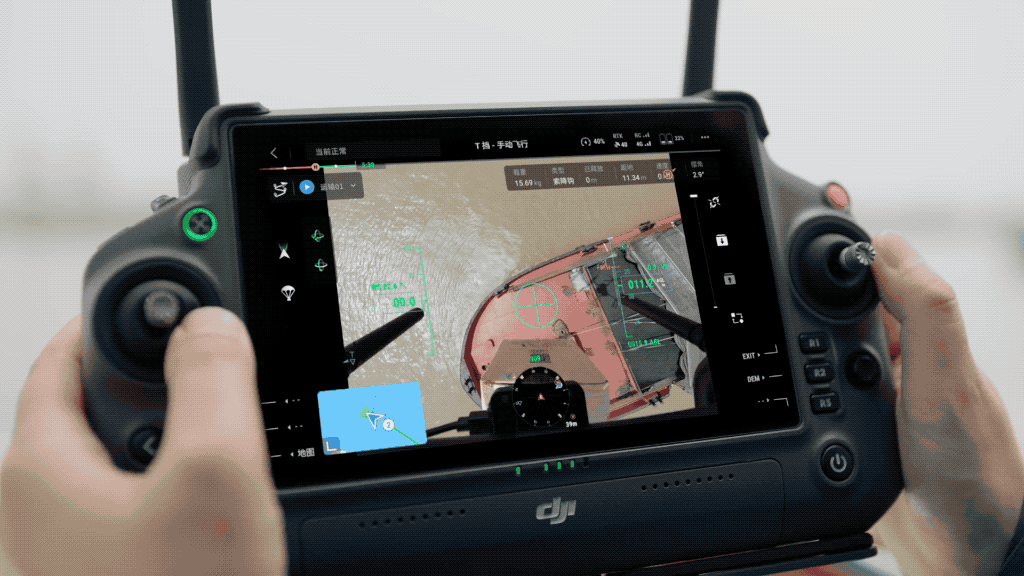
DJI FlyCart 30 can sever its own winch cable
This safety feature is offered in case hanging cargo gets tangled or caught, for example in a tree canopy or branches below. If a tangle occurs, the pilot will be prompted on their remote controller with the Cut Cable function which uses heat to sever the winch cable. This frees the drone and allows it to fly away safely. Before cutting the cable, make sure that the area directly below the aircraft is safe and unoccupied.
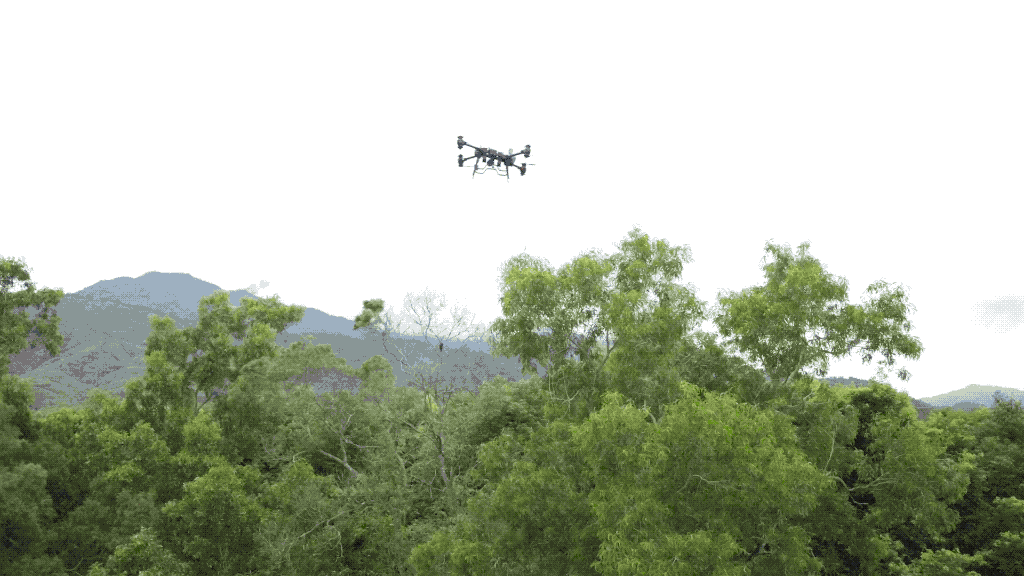
DJI FlyCart 30 has Dual Active Phased Array Radars
These two radars constantly scan the drone’s surroundings, during takeoff, flight, and landing. One radar is on the top-front of the drone, while the other is on the bottom-back, giving multidirectional sensing capabilities. These have a horizontal detection range of 1.5-50 m and a vertical detection range up to 200 m. Paired with the Binocular Vision System, they enable Intelligent Obstacle Sensing.
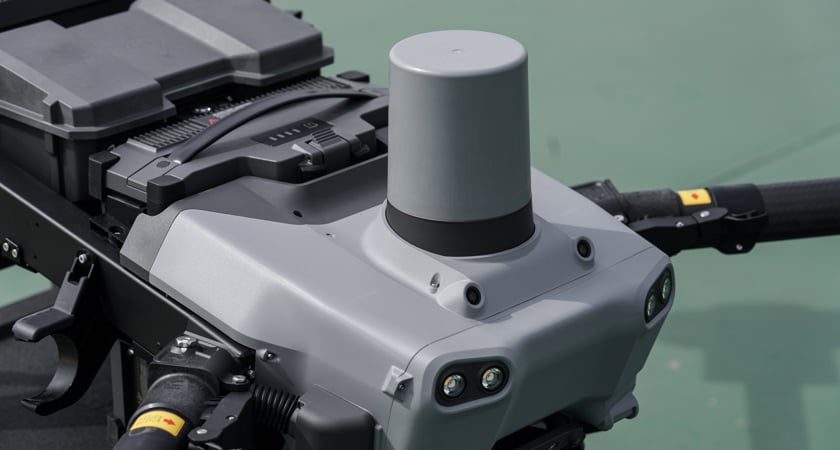
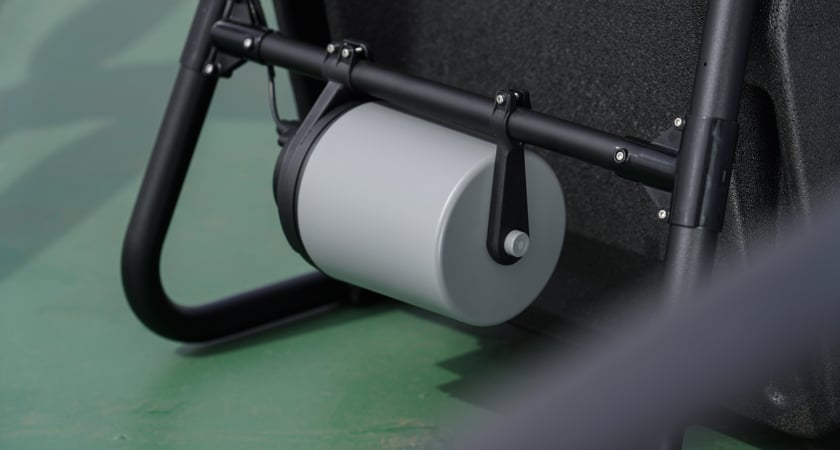
DJI FlyCart 30 has a Dual Binocular Vision System
These sensors placed on the front of the drone have a 90° horizontal FOV and a 106° vertical FOV, and work in sync with the drone’s radar systems to enable Intelligent Obstacle Sensing.

DJI FlyCart 30 supports Real-Time Terrain Sensing
With its radar and binocular vision systems, DJI FlyCart 30 can sense the terrain below, give the drone's real-time distance from the ground, and automatically adjust flight speed to avoid the ground. This improves the safety and efficiency of operations.

DJI FlyCart 30 is layered with multiple redundancies
It has backups of all critical systems and sensors. One example is its dual battery configuration, so if one battery fails, the other can take over. The same applies to the dual onboard IMUs, barometers, RTK antennas, radars, binocular sensors, and more. To learn more about DJI FlyCart 30’s redundancies, you can see the Redundant Systems Report.
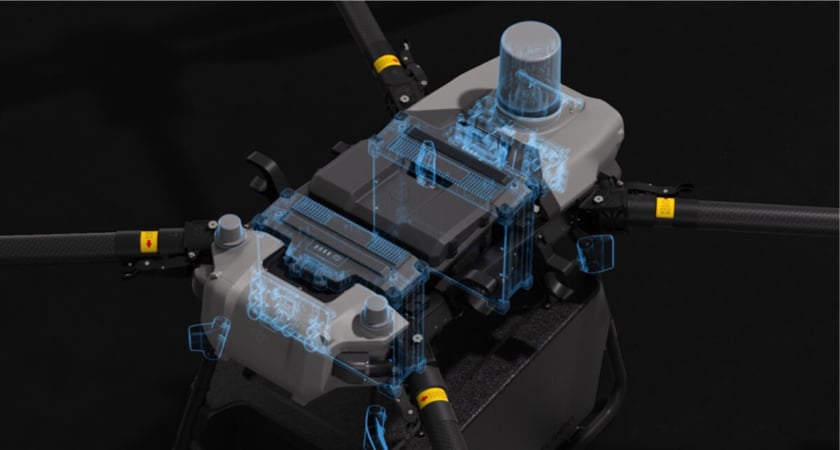
DJI FlyCart 30 supports pre-programming of Alternate Landing Sites
During a delivery flight, if conditions change and the drone calculates its original destination is unreachable, it can safely land at an intermediate alternate landing site. Having a backup plan is important.
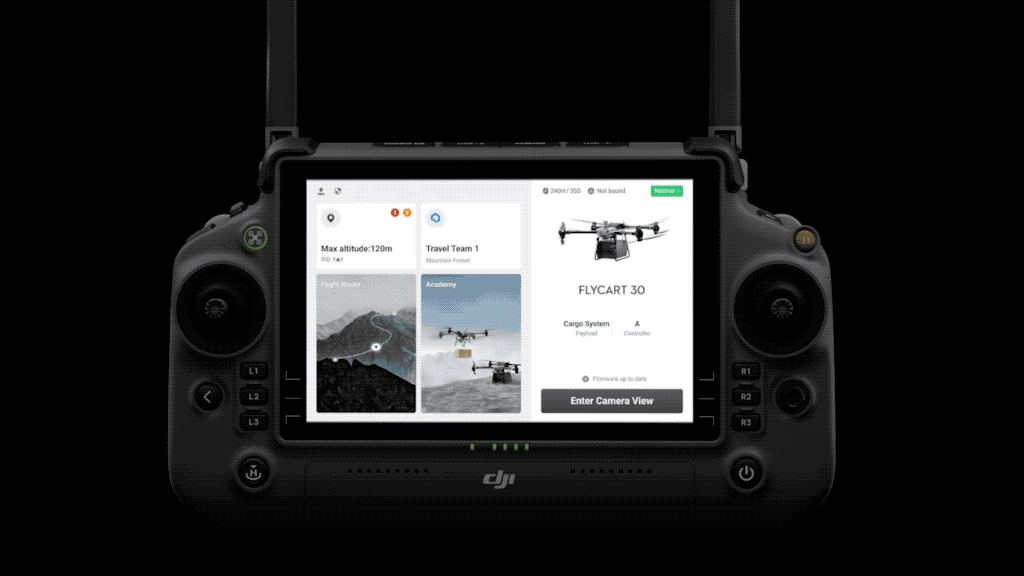
DJI FlyCart 30 has a built-in parachute for emergency landings
If the drone has a critical error, its nylon parachute will automatically deploy and land the drone safely. The parachute has its own self-check upon startup and an independent power supply. Before release, FlyCart 30 will stop the rotation of its propellers, so as not to contact the parachute. It requires a minimum of 60 meters altitude to deploy, and can land the drone safely at a terminal descent speed of 6 m/s when the drone’s total weight together with its cargo is less than or equal to 95 kg.

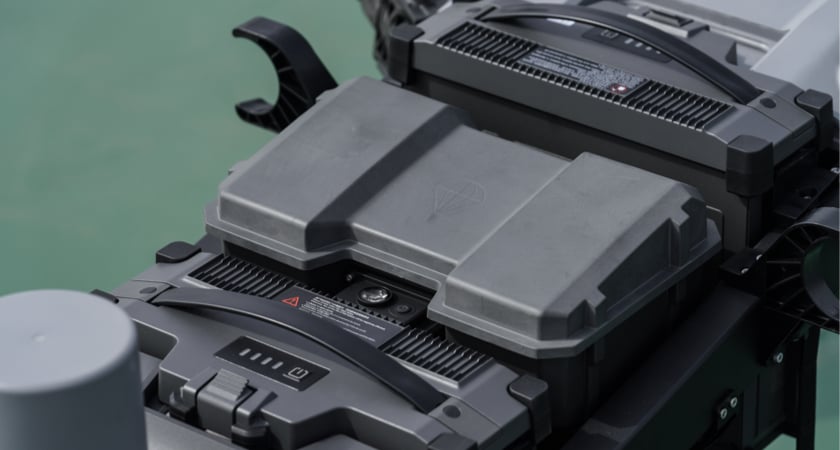
DJI FlyCart 30 has a high resolution FPV gimbal camera
With a 1920x1440 resolution and a 30fps frame rate, the FPV camera is on a single axis gimbal. This helps pilots and operators see the drone’s surroundings, improving situational awareness, and flight safety.

DJI FlyCart 30 has O3 video transmission up to 20 km
It is powered by the drone’s four antennas across 2.4 GHz/5.8 GHz dual bands. This means you can see crisp and clear video feeds from the drone as it flies, for improved situational awareness and flight safety.

DJI FlyCart 30 is controlled by DJI RC Plus and DJI Pilot 2
It has a 7-inch high bright screen, customizable buttons, and IP54 protection. Its control software is DJI Pilot 2 which displays real-time flight status, cargo status, and other interactive interfaces for efficient and safe operations.
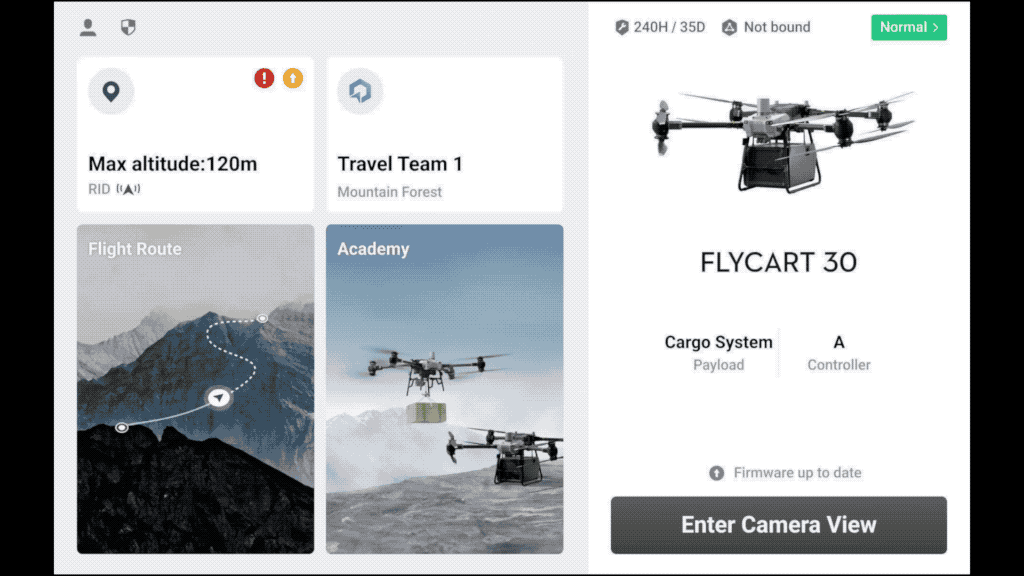
DJI FlyCart 30 supports Dual Operator mode
Two pilots, each with their own remote controller, can work together to operate the drone. Control permissions can be conveniently transferred from one pilot to the next, and this enables flexible operations over further distances.
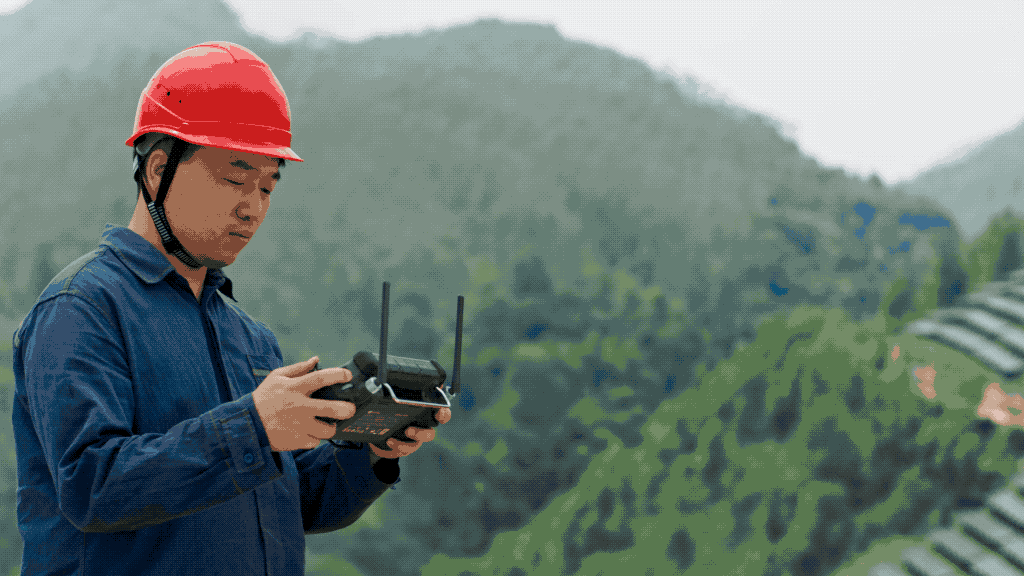
DJI FlyCart 30 can follow fully automatic pre-programmed flight routes
Flight routes can be planned with DJI Pilot 2, and managed with DJI DeliveryHub. Pilots still need to remain attentive at the control sticks, but for heavily repeated operations, this will safe a lot of effort.

DJI FlyCart 30 can be managed and organized with DJI DeliveryHub
DeliveryHub is a one-stop air delivery management platform that can help you plan deliveries, monitor ongoing delivery status, assign tasks to members of your team, and collect and analyze delivery data. It’s compatible across multiple device types, from computers, to cell phones, to remote controllers. It, together with DJI Pilot 2, is all you need to successfully operate DJI FlyCart 30.

In The Box
- 1x Aircraft
- 1x Remote Control DJI RC Plus
- 1x Remote Control Strap
- 1x Power Cable
- 1x USB-A to USB-C Cable
- 1x USB-C to USB-C Cable
- 1x WB37 Intelligent Battery
- 1x Goggles
- 1x Tools (1x Hex Key, 8x Propeller Washers, 4x Nuts)
- 1x Philip Screw Driver
- 1x Wrench
- 1x Battery Cover
- 1x DJI 100W USB-C Power Adapter
Specifications
Aircraft
| Specifications | Details |
|---|---|
| Weight (without battery) | 42.5 kg |
| Weight (with two DB2000 batteries) | 65 kg |
| Max Takeoff Weight | 95 kg (with cargo at sea level) |
| Max Diagonal Wheelbase | 2200 mm |
| Dimensions (arms unfolded, propellers folded) | 1590 × 1900 × 947 mm (L×W×H) |
| Dimensions (arms & propellers unfolded) | 2800 × 3085 × 947 mm (L×W×H) |
| Dimensions (arms & propellers folded) | 1115 × 760 × 1027 mm (L×W×H) |
| Folding Method | Towards body |
| Loadable Battery Quantity | 2 |
| Hovering Endurance (empty weight, dual battery) | 29 mins |
| Hovering Endurance (empty weight, single battery) | 15 mins |
| Hovering Endurance (max weight, dual battery) | 18 mins (30 kg load) |
| Hovering Endurance (max weight, single battery) | 8 mins (40 kg load) |
| Max Flight Distance (empty weight, dual battery) | 28 km |
| Max Flight Distance (empty weight, single battery) | 12 km |
| Max Flight Distance (max weight, dual battery) | 16 km (30 kg load) |
| Max Flight Distance (max weight, single battery) | 8 km (40 kg load) |
| Max Flight Time (max weight, dual battery) | 18 mins (30 kg load) |
| Max Flight Time (max weight, single battery) | 9 mins (40 kg load) |
| Operating Temperature | -20° to 45° C |
| Ingress Protection Rating | IP55 |
| Hovering Accuracy (strong GNSS) | RTK enabled: ±10 cm horizontal/vertical; RTK disabled: ±60 cm horizontal/ ±30 cm vertical (radar enabled: ±10 cm) |
| RTK/GNSS Operating Frequency | RTK: GPS L1/L2, Galileo F1/F2, BeiDou B1I/B2I/B3I, Galileo E1/E5b, QZSS L1/L2 GNSS: GPS L1, BeiDou B1I, Galileo F1, QZSS L1 |
| Max Pitch Angle | 30° |
| Max Ascent Speed | 5 m/s |
| Max Descent Speed | 3 m/s (vertical), 5 m/s (tilted) |
| Max Horizontal Speed | 20 m/s |
| Max Flight Altitude | 6000 m (without payload) |
| Max Wind Speed Resistance | 12 m/s |
Propulsion System
| Specifications | Details |
|---|---|
| Stator Size | 100 × 33 mm |
| Motor KV Value | 48 rpm/V |
| Max Motor Power | 4000 W per rotor |
| Propellers Material | Carbon fiber composite |
| Propellers Diameter | 54 inch |
| Propellers Type | Foldable double-blade |
| Main Rotor Diameter | 1375 mm |
| Rotor Quantity | 8 |
LED Light
| Specifications | Details |
|---|---|
| Effective Illumination Distance | 10 m |
| Illumination Mode | 60 Hz, auto-switch by ambient light |
DJI O3 Image Transmission
| Specifications | Details |
|---|---|
| Model | Pigeon (DDR)-2T4R |
| Signal Effective Distance | 20 km (FCC), 8 km (CE/SRRC/MIC) |
| Operating Frequency | 2.4000–2.4835 GHz, 5.725–5.850 GHz (region dependent) |
| EIRP | 2.400 GHz: <33 dBm (FCC), <20 dBm (CE/SRRC/MIC) 5.725 GHz: <33 dBm (FCC), <30 dBm (SRRC), <14 dBm (CE) |
| Data Security | AES-256 |
| ADS-B Support | Yes |
Forward and Backward Active Phased Array Radar
| Specifications | Details |
|---|---|
| Model Number | RD241608RF (forward), RD241608RB (backward) |
| Altitude Detection | 1.5–200 m |
| Rear Obstacle Avoidance | Distance: 1.5–50 m |
| Forward FOV | 360° horizontal, ±45° vertical and upward |
| Backward FOV | ±45° horizontal, 360° vertical |
| Operating Conditions | Available during takeoff, landing, ascending; safe distance: 3.5 m |
Binocular Vision System
| Specifications | Details |
|---|---|
| FOV (Horizontal/Vertical) | 90° / 106° |
| Work Environment | Normal lighting, textured surfaces |
FPV Camera
| Specification | Details |
|---|---|
| Resolution | 1920 × 1440 |
| DFOV | 149° |
| Frame Rate | 30 fps |
| Type | Full HD, single-axis gimbal |
| Fill Light | Supported |
Cargo Case
| Specifications | Details |
|---|---|
| Dimensions | 754 × 472 × 385 mm (L×W×H) |
| Inner Space | 573 × 416 × 305 mm (L×W×H) |
| Material | EPP with aluminum alloy frame |
| Weighing Feature | Supported |
| Weight | Approx. 3 kg |
| Load Capacity | 0–40 kg |
Parachute
| Specifications | Details |
|---|---|
| Max Payload | ≤ 95 kg |
| Dimensions | 300 × 200 × 120 mm (L×W×H) |
| Weight | Approx. 2.1 kg |
| Automatic Reaction Time | Approx. 1000 ms |
| Descending Speed | ≤ 6 m/s (sea level, no wind) |
| Shape | Square |
| Material | Nylon |
| Surface Area | Approx. 22 m² |
| Minimum Opening Height | 60 m |
| Operating Temperature | -20° to 45° C |
| IP Rating | IP55 |
| Mainboard Battery Life | ≥ 1 hour |
| Memory Card Capacity | Real-time record for 10 flights |
| Buzzer Alarm | Supported |
| Lighting Alarm | Supported |
| Manual Opening | Supported |
| Automatic Opening | Supported |
Winch System (Optional)
| Specifications | Details |
|---|---|
| Model | A2EWI-30A |
| Dimensions | 252 × 195 × 193 mm (L×W×H) |
| Body Weight | 2.5 kg (without clump and couple) |
| Clump Weight | 1.9 kg |
| Couple Weight | 0.6 kg |
| Touchdown Release | Supported |
| Payload Capacity | 5–30 kg (dual battery), 5–40 kg (single battery) |
| Cable Length | 20 m |
| Max Retraction Speed | 0.8 m/s |
| Operating Temperature | -20° to 45° C |
| IP Rating | IP55 |
| Weighing Function | Supported |
| Cut Cable Protection | Supported |
| Swing Control Feature | Supported |
| Manual Operation | Supported |
| Automatic Operation | Supported |
| Deceleration Protection | Supported |
DJI DB2000 Intelligent Battery
| Specifications | Details |
|---|---|
| Model | DB2000 |
| Capacity | 38000 mAh |
| Nominal Voltage | 52.22 V |
| Type | 14S1P |
| Energy | 1984.4 Wh |
| Weight | Approx. 11.3 kg |
| Dimensions | 316 × 152 × 279 mm (L×W×H) |
| Operating Temperature | -20° to 45° C |
| Charging Rate | 5 to 15° C: 1.0C; 15 to 45° C: 2.5C |
| Max Charging Power | 5700 W |
| Automatic Heating | Supported (activates below 10° C or 20° C) |
DJI C8000 Intelligent Charger
| Specifications | Details |
|---|---|
| Model | CHX101-7000 |
| Input | 90–264 V AC |
| Output | 42–59.92 V DC |
| Max Output Power | 7200 W (Dual input), 3600 W (Single input) |
| Output Channels | 2 |
| Protection Features | Overheating, overvoltage, undervoltage, short circuits, fan stalls |
| Operating Temperature | -20° to 45° C |
| Charging Security | Connector protection feature |
Remote Controller
| Specifications | Details |
|---|---|
| Type | DJI RC Plus |
| App | DJI Pilot 2 |
| Operating Frequency | 2.400–2.483 GHz, 5.725–5.850 GHz |
| EIRP | 2.400–2.4835 GHz: <33 dBm (FCC), <20 dBm (CE/SRRC/MIC) 5.725–5.850 GHz: <33 dBm (FCC), <23 dBm (SRRC), <14 dBm (CE) |
| Operating Temperature | -20° to 50° C |
| Charging Temperature | 5° to 40° C |
| Built-in Battery Life | 3.3 hours |
| External Battery Life | 2.7 hours |
| Charging Method | USB-C fast charging (≥ 65 W recommended) |
| Charging Time | 2 hours (built-in battery), 2.5 hours (built-in + external battery) |
| IP Rating | IP54 |
| Video Output Interface | HDMI |
| Wi-Fi Protocol | Wi-Fi 6 |
| Wi-Fi Frequency | 2.4000–2.4835, 5.150–5.250, 5.725–5.850 GHz |
| Bluetooth Protocol | Bluetooth 5.1 |
| Bluetooth Frequency | 2.4000–2.4835 GHz |
| EIRP (Bluetooth) | <10 dBm |
| GNSS | GPS, Galileo, BeiDou |
| Screen | 7.02 inch touch LCD, 1920×1200 px, 1200 nits |
| Dual Operator Mode | Supported |
Software Updates
| Specifications | Details |
|---|---|
| Guaranteed Updates Until | 2026/12/31 |

